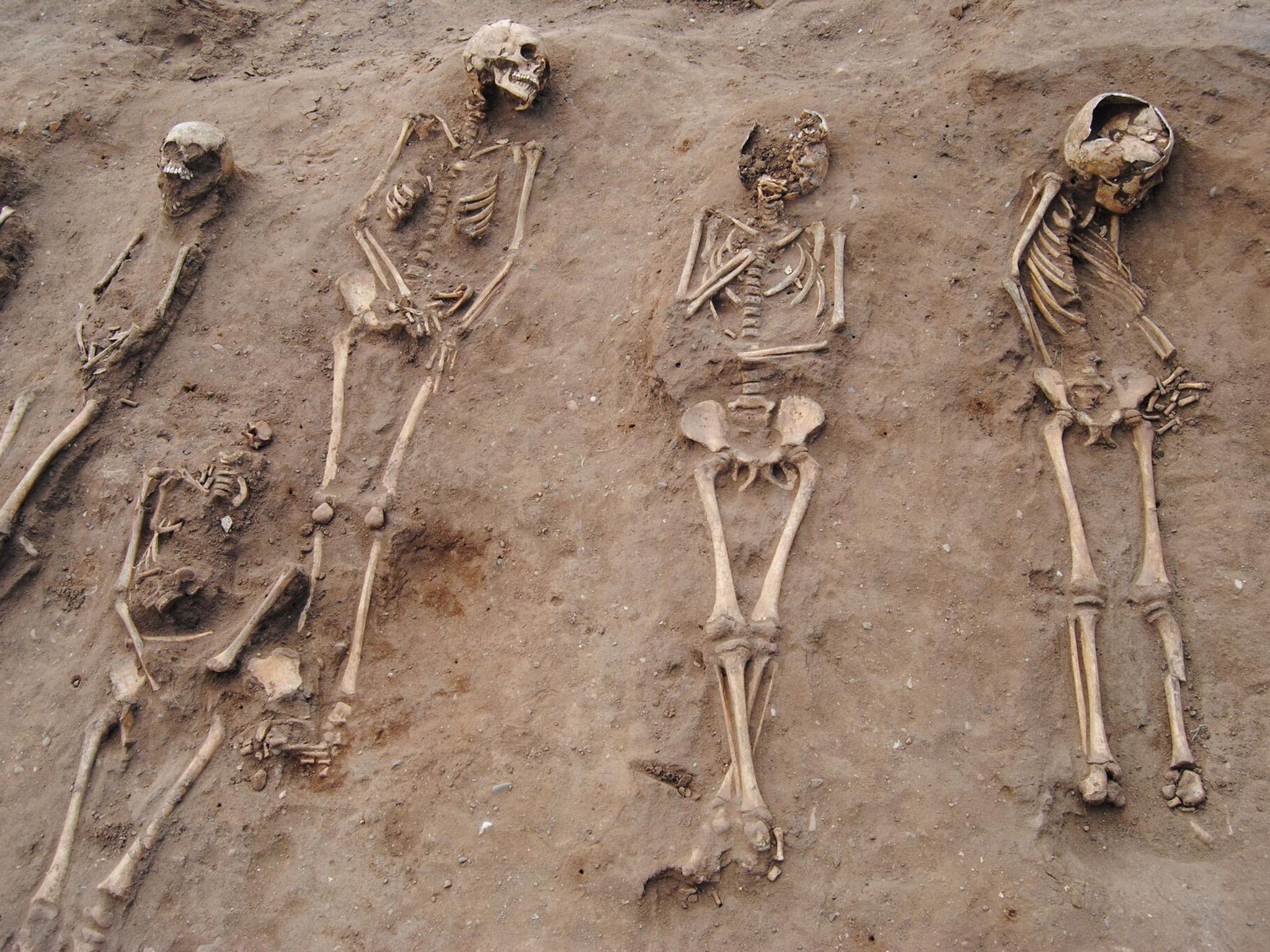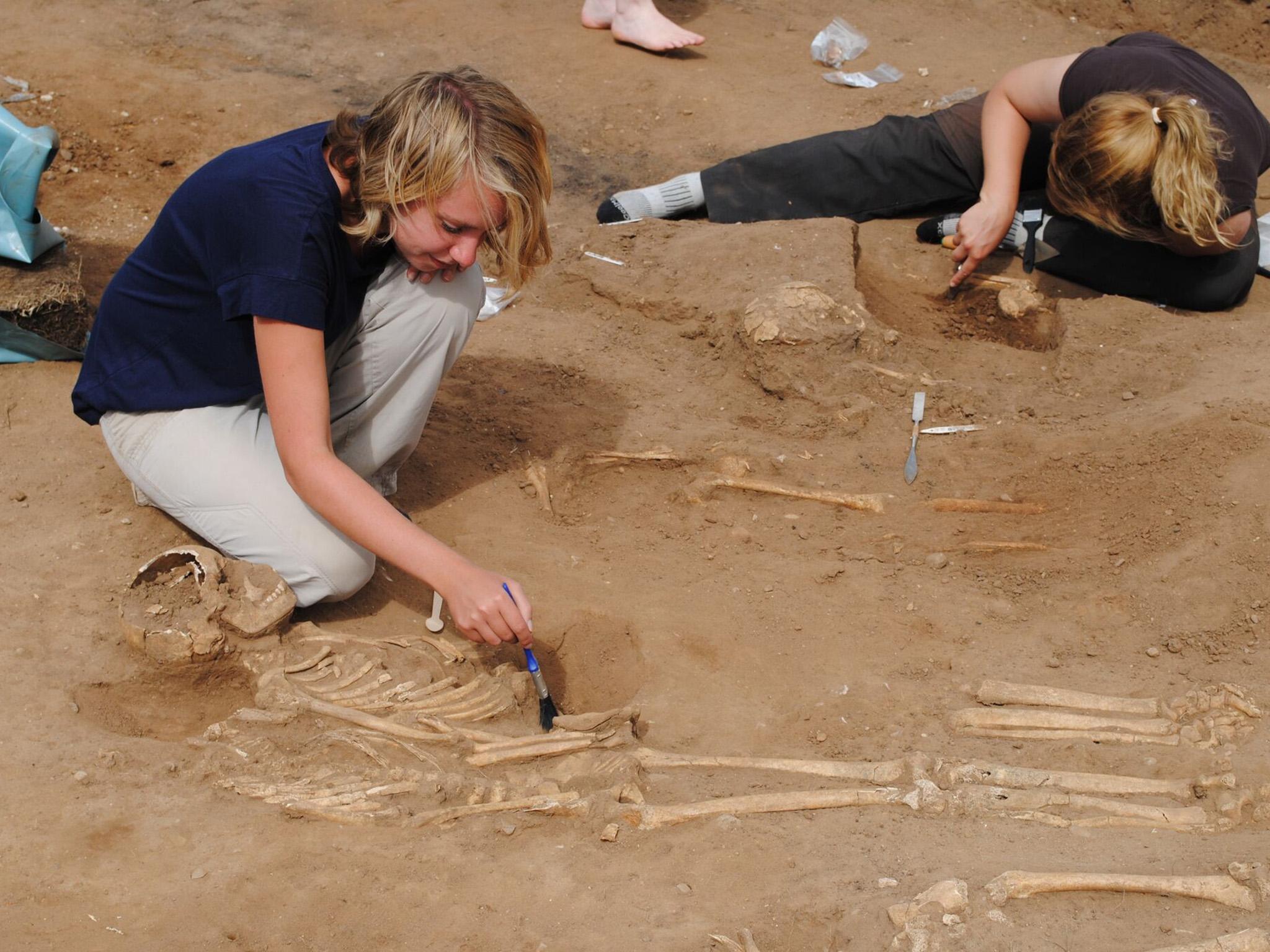Plague pit with skeletons of 48 Black Death victims, including 21 children, found at abbey in Lincolnshire
Mass burial pits remain unusual from disease that killed around half of Britain's population

Your support helps us to tell the story
From reproductive rights to climate change to Big Tech, The Independent is on the ground when the story is developing. Whether it's investigating the financials of Elon Musk's pro-Trump PAC or producing our latest documentary, 'The A Word', which shines a light on the American women fighting for reproductive rights, we know how important it is to parse out the facts from the messaging.
At such a critical moment in US history, we need reporters on the ground. Your donation allows us to keep sending journalists to speak to both sides of the story.
The Independent is trusted by Americans across the entire political spectrum. And unlike many other quality news outlets, we choose not to lock Americans out of our reporting and analysis with paywalls. We believe quality journalism should be available to everyone, paid for by those who can afford it.
Your support makes all the difference.A plague pit containing the skeletons of 48 Black Death victims, including 21 children, has been discovered at the site of a 14th century monastery hospital.
The macabre find in Thornton Abbey, near Immingham in North Lincolnshire, was discovered by a team from Sheffield University.
The presence of such a large burial site - which included both male and female adults as well as the children - suggests the community was overwhelmed by Black Death and left unable to cope with the number of people who died, they said.
The Black Death was one of the worst pandemics in human history. It devastated European populations from 1346 to 1353 and resulted in the deaths of an estimated 75 to 200 million people.
The disease is documented to have reached Lincolnshire in the spring of 1349.
The team said they sent teeth samples from the skeletons found at the Thornton Abbey site to McMaster University in Canada, where ancient DNA was successfully extracted from the tooth pulp. DNA test revealed the presence of Yersinia pestis, the bacterium responsible for the plague.
Dr Hugh Willmott, Sheffield University's Department of Archaeology, said: "Despite the fact it is now estimated that up to half the population of England perished during the Black Death, multiple graves associated with the event are extremely rare in this country, and it seems local communities continued to dispose of their loved ones in as ordinary a way as possible."

Dr Willmott said the only two previously identified 14th-century sites where Yersinia pestis has been identified are historically documented cemeteries in London, where the civic authorities were forced to open new emergency burial grounds to cope with the very large numbers of the urban dead.
He said: "The finding of a previously unknown and completely unexpected mass burial dating to this period in a quiet corner of rural Lincolnshire is thus far unique, and sheds light into the real difficulties faced by a small community ill-prepared to face such a devastating threat."
The archaeologist, who has been working at the site since 2011, said items found at the abbey have also shed light on the lives of those who lived there.
He said one artefact found in the excavated hospital building was a small Tau Cross pendant, which some people thought was a cure for St Anthony's fire, a term used to describe a variety of skin conditions.
He said: "While skeletons are interesting, they just represent the end of somebody's life and actually what we are interested in as archaeologists is the life they led before they died.
"One of the ways we can connect with that is through the everyday objects they left behind.
"Before we began the dig, the site was just an ordinary green field grazed by sheep for hundreds of years, but like many fields across England, as soon as you take away the turf, layers of history can be revealed by archaeology."
Dr Diana Mahoney Swales, of the University of Sheffield's Department for Lifelong Learning, who is leading the study of the bodies, said: "Once the skeletons return to the lab, we start properly learning who these people really are.
"We do this by identifying whether they are male or female, children or adults. And then we start to investigate the diseases that they may have lived through, such as metabolic diseases like rickets and scurvy, which are degenerative diseases for the skeleton.
"However, for diseases such as plague, which are lethal, we have to use ancient DNA analysis to investigate that further."
PA
Join our commenting forum
Join thought-provoking conversations, follow other Independent readers and see their replies
Comments